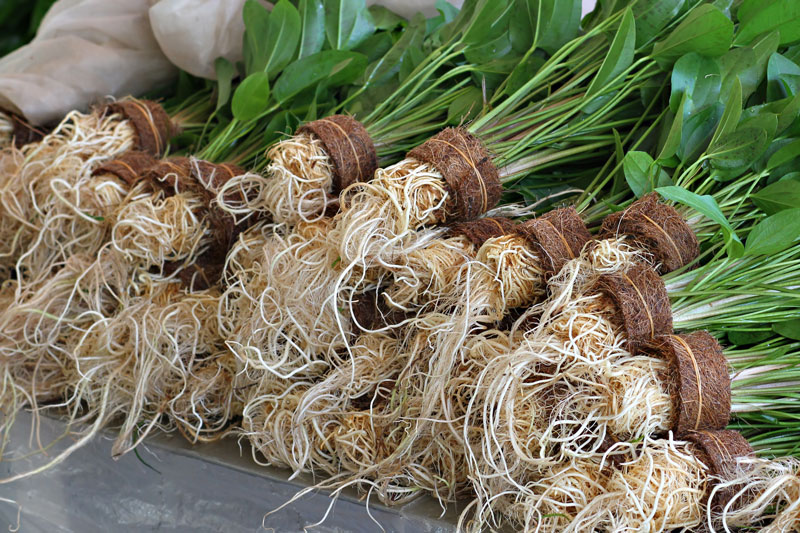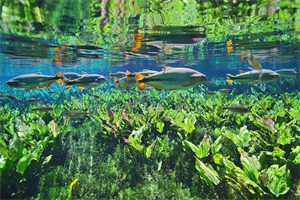Substrate

Nature's example
In nature, you find aquarium plants in very diverse habitats. The absolute specialists, such as Vallisneria, Cabomba, and Egeria, have adapted to living in water permanently These plants absorb nutrients from the substrate and the water. However, a large proportion of aquarium plants are marsh plants, which grow periodically above and below water.

In these cases, the nutrients are absorbed almost exclusively via the roots in dry periods. Echinodorus, Cryptocorynes, and many stem plants, like Hygrophila and Ludwigia, belong to this group. Therefore, when caring for plants in an aquarium, nutrient absorption should always occur in the substrate, via the roots, and in the water, via the leaves.
Everything is important
Plants require a wide variety of essential nutrients, also known as macronutrient elements. In addition to the four basic elements: carbon, hydrogen, oxygen, and nitrogen, the other elements of phosphorus, potassium, sulphur, calcium, and magnesium are also very important or essential. Although only minute amounts are required, for some plant genera or species, balanced nutrition is impossible without these elements.
The law of the minimum, formulated by Carl Sprengel (1828) and Justus Liebig (1855) is important in terms of understanding why plants grow or not. According to the law, the growth of a plant is limited by the scarcest resource. Even if other nutrients are available in surplus, they will have no impact on growth if something else is lacking.
A sound basis – the substrate
For most aquarium plants, nutrient uptake via the roots is vital. In nature you find a wide variety of different soils, such as sand, clay, loam, chalk and humus.
For many plants, a mixture of sand, clay, and humus is best. The quartz sand creates the ideal pore volume for good aeration. Clay minerals regulate the nutrient balance. They release nutrients when needed and absorb them when there is a surplus. Humus-rich natural peats create a slightly acidic soil environment, like the one found in nature. Concentrated iron ensures balanced growth and rich-green leaves.
The Dennerle Plants Substrate is always used in combination with a layer of gravel.
Crystal quartz gravel with rounded grains is ideal. The water can slowly circulate in the layer of gravel and, along with the nutrient substrate, a giant biological filter gradually forms.
Aquarium Soil
An alternative to the longlasting substrate is the nutrient substrate, Dennerle Plants Soil. It is an active substrate which decreases the pH value and the carbonate hardness. Commonly found in the tropics, many fish, shrimp, and plant species love soft, slightly acidic water.
This active soil consists of 100% natural raw materials. Made from various carefully selected natural soils, it supplies all the essential minerals and trace elements that aquarium plants require each day.
The irregularly shaped grains have a diameter of 1 to 4 mm, giving the subst- rate a particularly natural effect. Its loose structure permits optimum water flow and plant roots can grow into it well. Soil provides the perfect basis for healthy, strong plant growth and vibrant colors.
Unlike with the long-lasting nutrient substrate, a layer of gravel is not necessary.
_____________
Continue reading about: Aquarium Plants
